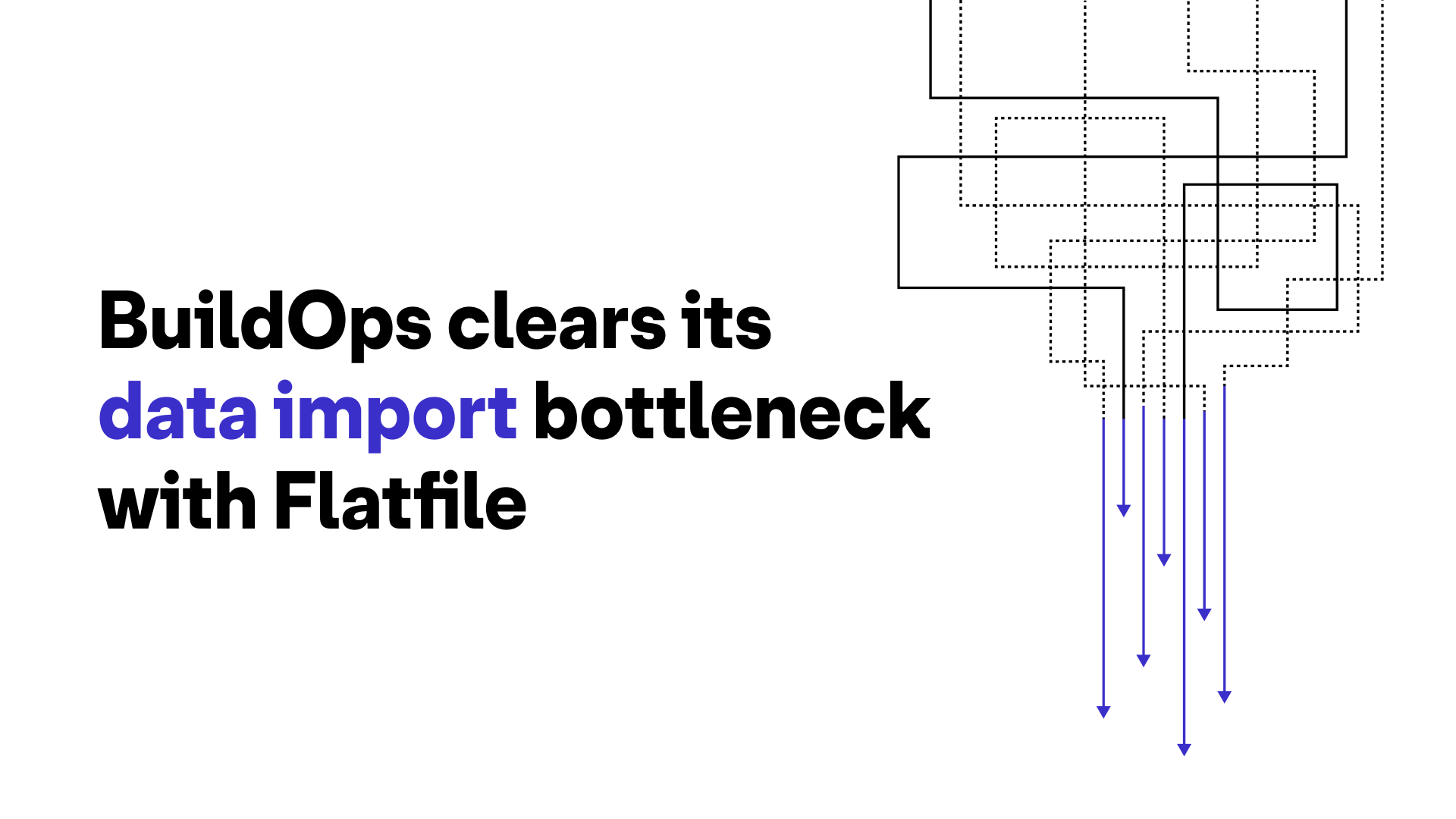How BuildOps helps keep critical infrastructure running with Flatfile

Noelle Festa
Share to

BuildOps customers serve data centers, hospitals, power plants, and other large-scale critical infrastructure and BuildOps has been enjoying steady growth with its recession-proof business model. However, with data files and records coming in from people and teams across the country, the volume of data was becoming overwhelming.
When your company works with the people who keep power plants, hospitals and commercial real estate running, you're responsible for a lot of moving targets. With new contractors coming on board every day, BuildOps realized it was time to find a solution for managing the challenges of data exchange.
BuildOps decided to implement Flatfile to streamline its workflow, which removed their data flow bottleneck and decreased time to launch by about 15%-20%. They now have a faster onboarding process that lets their customers get their focus back on what matters.
“Flatfile is one of the levers we’re pulling to make our process more scalable, repeatable, and automated,” said Scott Patterson, Director of Implementation.
Growing pains
As their business grew, BuildOps knew they had to automate. BuildOps customers come to them with in-house database files, spreadsheets, and even handwritten records. This "master data" includes information about their customers' properties, vendors, and the products their teams use to get their jobs done. All of that data needs to be imported into BuildOps before customers can get started on the platform.
"There’s a wide degree of variability between customers," said Arjun Karande, Chief Architect at BuildOps. "We request that our customers share data in a standard format, but that doesn't always happen. Often, they'll send it to us in whatever format they have, and it becomes our job to clean it up. And we have to be very careful not to introduce new errors that could further delay their rollout, costing everyone more money."
Implementation managers at BuildOps used to perform this task manually, which sometimes took weeks. "We considered building a data import solution on our own," said Karande. "But that was just going to be another piece of software for us to develop and manage. Eventually, we decided that it would be better to look for a ready-made solution built by a team whose core focus was this particular task. That is how we came to choose Flatfile.”
Connect with an expert
Evaluating Flatfile for your business needs?
Automating data import provides direct business impact
BuildOps now automates its customer data import process using Flatfile, which uses machine learning to automate decisions about how data is formatted based on thousands of previous use cases. Now, users can sort through and correctly format large data sets in minutes (rather than weeks). A human-in-the-loop layer suggests corrections and remembers decisions for later reuse.
The best part was that getting started with Flatfile was easy.
“The implementation process was fantastic,” said Karande. “The Flatfile support team was always available and super responsive to our needs. It wasn’t long before we got comfortable using it on our own.”
The real power of Flatfile is its highly customizable APIs that allow developers to customize Flatfile for their specific business and to trigger its functionality from within other applications. Using Flatfile APIs and the Flatfile Software Development Kit (SDK), developers can create highly specialized solutions that integrate seamlessly with their existing workflows.
“It really helps that Flatfile is an API-first platform,” said Karande. “It has a great mix of human-in-the loop operation and deeply embedded APIs that make using it easy, flexible, and powerful.”
Since implementing Flatfile into its workflow, with the reduction in onboarding time and reduced reliance on engineering resources, BuildOps has seen an average 20%-25% decrease in per-project person hours, estimating that Flatfile is saving 60-90 person hours per month across the team.
“It’s one of the more important tools in our implementation toolbox,” said Patterson. “Without tools like Flatfile, scaling would be almost impossible.”
Flatfile has helped hundreds of companies tackle their data onboarding challenges, supporting just about any business or data requirement. Reach out and connect with one of our data experts to find out how Flatfile can help you address your data onboarding use case and requirements.
Data onboarding should be fast and painless
Our free in-depth guide will help you address data onboarding challenges and help new customers become customers for life.


